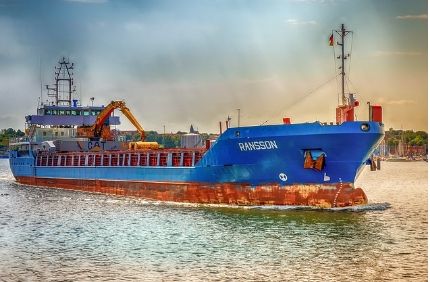Understanding the Ocean Bill of Lading in International Shipping
An Ocean Bill of Lading (B/L) is a vital document used in international maritime transport. It serves multiple purposes: as a receipt issued by the carrier to the shipper, a contract of carriage, and a document of title for the goods being shipped. Here's a comprehensive look at the Ocean Bill of Lading, its types, key functions, and its significance in global trade.

Key Functions of the Ocean Bill of Lading
• Receipt of Goods: It serves as proof that the carrier has received the cargo as described and in good condition from the shipper.
• Contract of Carriage: It outlines the terms and conditions under which the goods are transported from the origin to the destination.
• Document of Title: It often represents ownership of the cargo, which can be transferred by endorsing the bill of lading. This feature enables the buying and selling of goods while they are in transit.
Types of Ocean Bill of Lading
• Straight Bill of Lading: Issued to a consignee that is named in the document and is non-negotiable. The goods can only be delivered to the specified consignee.
• Order Bill of Lading: This type can be negotiated and endorsed to third parties. It is used commonly in international trade, allowing the transfer of ownership of the goods during transit by transferring the bill of lading.
• Bearer Bill of Lading: Specifies that delivery shall be made to whomever holds the bill. This type is highly negotiable but rare due to security risks.
Features of the Ocean Bill of Lading
1. Consignor and Consignee: Names and addresses of the shipper (consignor) and the recipient (consignee).
2. Notify Party: The person or entity that should be notified upon arrival of the goods.
3. Vessel and Voyage Number: Details of the ship carrying the goods and its voyage number.
4. Goods Description: Detailed description of the cargo including type, quantity, weight, and any marks and numbers used to identify the packages.
5. Port of Loading and Discharge: The ports where goods are loaded onto and discharged from the vessel.
6. Freight Details: Terms regarding the payment of freight (prepaid or collect), which indicates whether the freight was paid at the shipping point or will be paid at the destination.
Importance of the Ocean Bill of Lading
• Legal Evidence: Provides legal evidence of the contract of carriage between the shipper and the carrier.
• Security: Since it is a document of title, it provides security to banks financing international trade, allowing them to use it as collateral.
• Customs and Clearance: Used by customs for processing import duties and by consignees to obtain release of the cargo.
Legal Implications
• Letter of Credit Transactions: For trades under a letter of credit, the ocean bill of lading is often a required document for payment, inspection, and compliance purposes.
• Claims and Disputes: In case of loss, damage, or delay, the ocean bill of lading is crucial for making insurance claims or disputes.
Best Practices for Managing Ocean Bills of Lading
• Accuracy and Completeness: Ensure all information is accurate and complete to avoid delays and additional charges.
• Secure Handling: Due to its importance as a document of title, handle the ocean bill of lading with care to avoid loss or fraudulent activities.
• Timely Processing: Ensure the bill of lading is processed promptly to avoid delays in shipping or cargo release.
Conclusion
The Ocean Bill of Lading is an indispensable document in international maritime trade, encapsulating the details of the cargo, terms of shipping, and ownership. Understanding its functions, types, and legal implications is crucial for businesses involved in international shipping, ensuring smooth logistics and legal compliance.
Related articles

 WeChat of CBiBank
WeChat of CBiBank